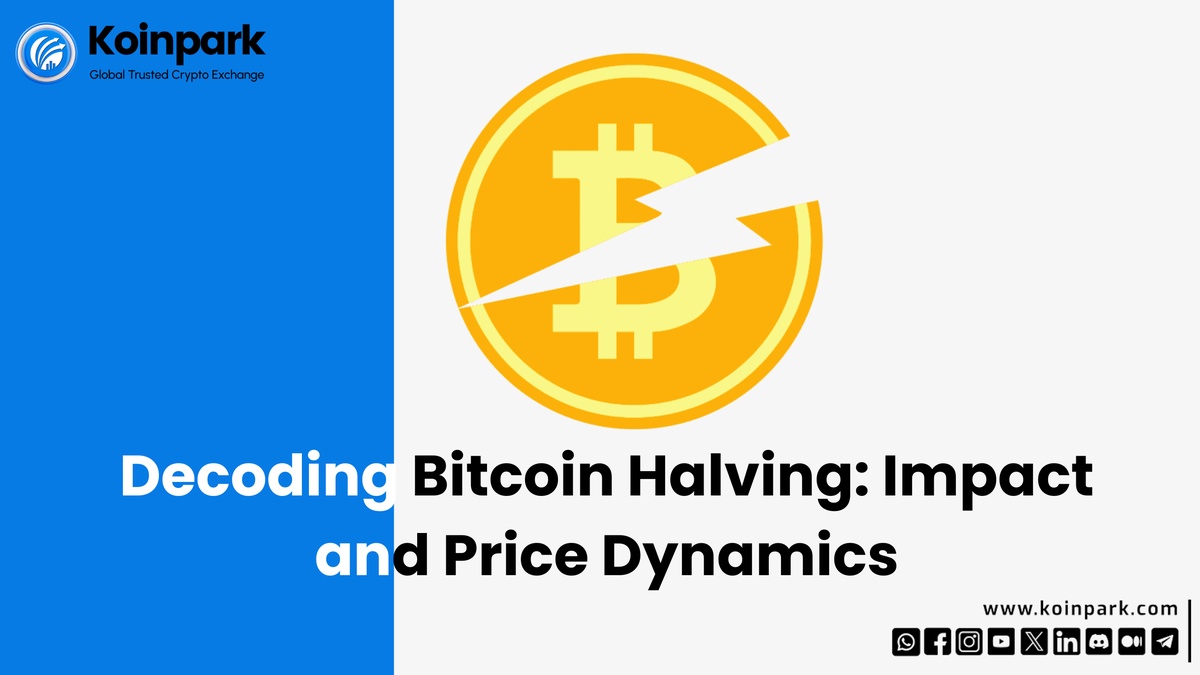What is Bitcoin Halving?
Bitcoin halving is a programmed event that halves the reward miners receive for validating transactions in the Bitcoin network. It occurs approximately every four years to control the supply of bitcoins, reducing it by half.
This scarcity mechanism is fundamental to Bitcoin's value proposition, impacting its price and market dynamics. Investors often monitor BTC to INR rates on every global crypto exchange to gauge the immediate effects of these halving events on Bitcoin's value.
Bitcoin’s Blockchain and proof of work
- A blockchain functions as a digital ledger, storing information such as transactions. In the context of Bitcoin and other cryptocurrencies, transactions are recorded within this decentralized database.
- Information about transactions is stored in blocks, which are linked chronologically. This ensures clarity about the timing of each transaction and helps prevent double-spending, addressing potential controversies.
- Every block comprises a fixed number of transactions. To confirm these transactions as valid and add the block to the blockchain, a validation process is necessary.
- Miners, individuals frequently concerned with upcoming Bitcoin halving dates, play a crucial role in this process.
- Miners use their personal computers or specialized mining machines to validate transactions on the blockchain. This validation involves solving complex mathematical equations.
- When a miner successfully solves these equations and verifies a block, they receive the block reward—an amount of BTC determined by each Bitcoin halving cycle.
What will the impact be on the Price of BTC?
- Halving diminishes the supply of new bitcoins, theoretically boosting the price. According to economic theory, when demand for an asset remains constant while its supply decreases, its price tends to rise.
- Data from the asset research firm 10x Research indicates that the average price increase over the 60 days following the past three halvings (in 2020, 2016, and 2012) was 16%.
- However, the 2016 halving initially saw a 6% decrease over the following 60 days, followed by a strong rally throughout 2017.
- Over the past weeks, Bitcoin has experienced a significant decline from its recent peak of over $70,000 (£56,175) to approximately $62,000.
- Despite this, it continues to be a robustly performing asset, showing a 40% increase in value thus far in 2024, more than doubling its value compared to the same period last year.
- It's important to mention that following the 2016 and 2020 halvings, prices did rise; however, there were extended periods of decline, referred to as "crypto winters," in both 2018 and 2022, during which prices experienced prolonged dips.
Conclusion
In conclusion, Bitcoin halving is a pivotal event in the cryptocurrency's ecosystem, designed to regulate its supply and maintain its value proposition. It significantly impacts market dynamics, often leading to substantial price fluctuations. While historical trends suggest a correlation between halving events and price surges, it's essential to recognize that various factors contribute to Bitcoin's price movements.
Therefore, while halvings play a crucial role, they are just one piece of the complex puzzle influencing BTC's price trajectory. Investors often track BTC to INR rates on every global crypto exchange app to assess immediate impacts. For those in India, understanding how to buy Bitcoin in India is crucial, especially amidst every token listing and evolving regulatory landscape.


No comments yet